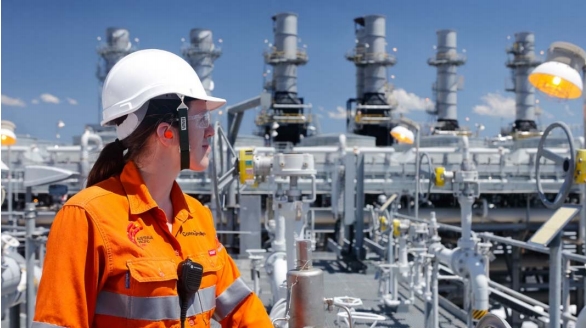
APLNG has signed on with the Federal Government to boost gas supply (Photo: APLNG)
Senex, which is now partly owned by Gina Rinehart and the APLNG coal seam gas joint venture would deliver up to 300 petajoules by 2030 and 140pj by 2027.
The 2030 target of 300pj was equivalent to the current east coast industrial demand.
Other commitments were well advanced, according to the Federal Government.
The Federal Government said the energy market operator and ACCC had warned that Australia would not have enough gas to power factories, generate power, cook and heat homes in 2027.
“These supply agreements help guard against that outcome and are crucial for avoiding a serious problem,” a joint statement from Energy Minister Chris Bowen and Resources Minister Madeleine King said.
“It is reckless of the Greens and any opposition and cross bench parties to play politics with people’s livelihoods in this way.
“This supply is critical for households, industry and gas power generation as the Bass Strait fields deplete.
“While Australian gas producers and users welcome the certainty the code provides, its full implementation remains at risk due to the reckless attempt of the Greens to disallow the code in Parliament because they oppose new gas supply, even when it is committed to the domestic market to help meet forecast shortfalls.
“If disallowed, these commitments from APLNG and Senex would no longer apply, threatening this supply into the east coast market and creating untenable shortfall risk.”
APLNG and Senex have been granted Ministerial Exemptions from the pricing provisions of the Gas Market Code of Conduct, giving the companies regulatory certainty over their investment and development plans – and the additional supply helping to keep a lid on prices.
Bowen said the outcome was a win for Australian energy users.
“The new commitments will provide more affordable gas to the Australian market in the short to medium term and will provide the energy security that Australia needs as it makes its transition to net zero emissions,” he said.
A report from the Australian Energy Producers found substantial gas production would still be needed by 2050.
The organisation commissioned EY to produce a report on the future of gas in the net zero environment.
EY examined 350 net zero pathways globally and found that Australia would still need gas and that it would play an important role.